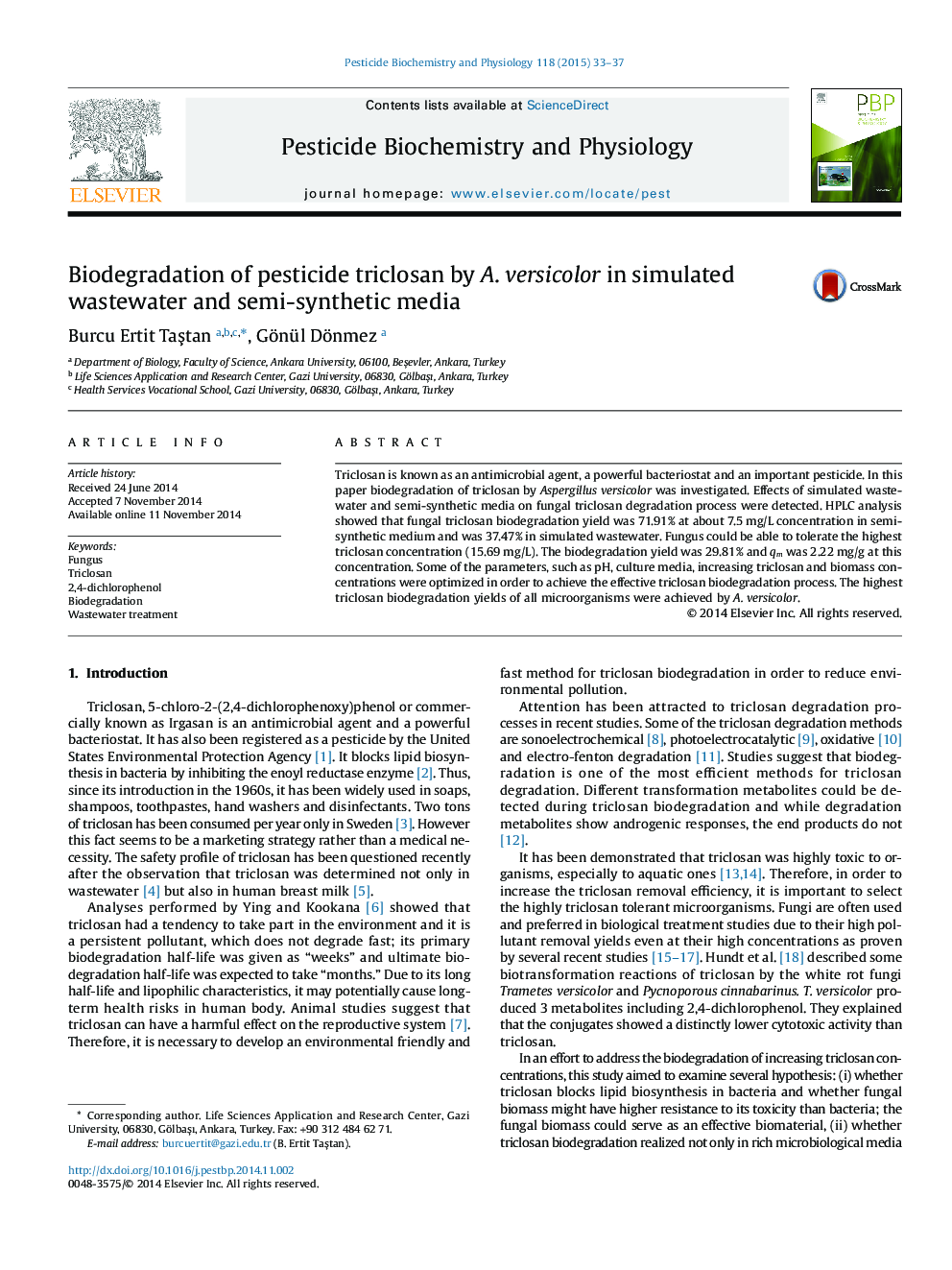| کد مقاله | کد نشریه | سال انتشار | مقاله انگلیسی | نسخه تمام متن |
|---|---|---|---|---|
| 2009178 | 1541781 | 2015 | 5 صفحه PDF | دانلود رایگان |

• Effects of media and simulated wastewater on triclosan degradation were tested.
• The highest triclosan biodegradation yield of all microorganisms was achieved.
• The maximum biodegradation yield was found as 71.91% at 7.5 mg/L triclosan concentration.
• Triclosan was biodegraded to 2,4-dichlorophenol, Cl− and end products by fungus.
Triclosan is known as an antimicrobial agent, a powerful bacteriostat and an important pesticide. In this paper biodegradation of triclosan by Aspergillus versicolor was investigated. Effects of simulated wastewater and semi-synthetic media on fungal triclosan degradation process were detected. HPLC analysis showed that fungal triclosan biodegradation yield was 71.91% at about 7.5 mg/L concentration in semi-synthetic medium and was 37.47% in simulated wastewater. Fungus could be able to tolerate the highest triclosan concentration (15.69 mg/L). The biodegradation yield was 29.81% and qm was 2.22 mg/g at this concentration. Some of the parameters, such as pH, culture media, increasing triclosan and biomass concentrations were optimized in order to achieve the effective triclosan biodegradation process. The highest triclosan biodegradation yields of all microorganisms were achieved by A. versicolor.
Graphical AbstractFigure optionsDownload as PowerPoint slide
Journal: Pesticide Biochemistry and Physiology - Volume 118, February 2015, Pages 33–37